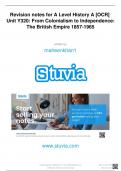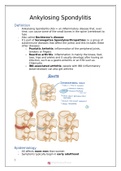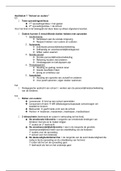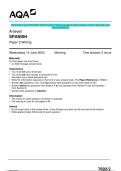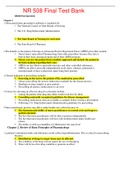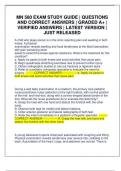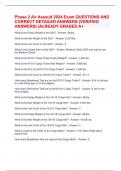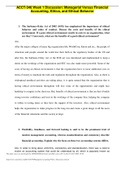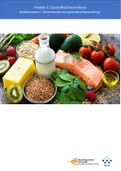Samenvatting
Summary Revision notes for A Level History A [OCR] Unit Y320 From Colonialism to Independence: The British Empire
- Vak
- Instelling
The following document contains revision notes for A Level History A [OCR] Unit Y320: From Colonialism to Independence: The British Empire. It outlines and summarises key notes on the topics below. - The governance and administration of the Empire - Opposition to British rule - The impact of i...
[Meer zien]
